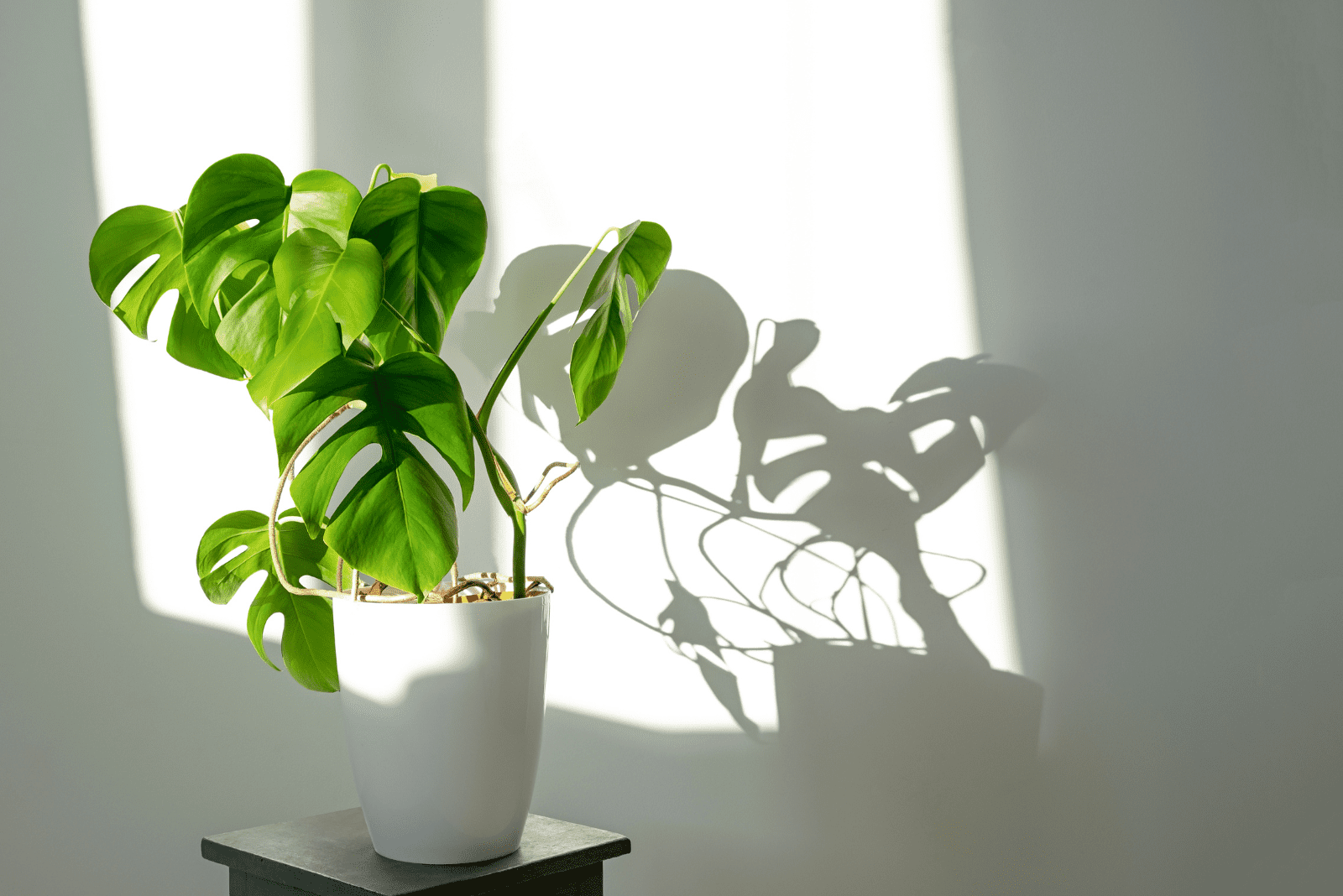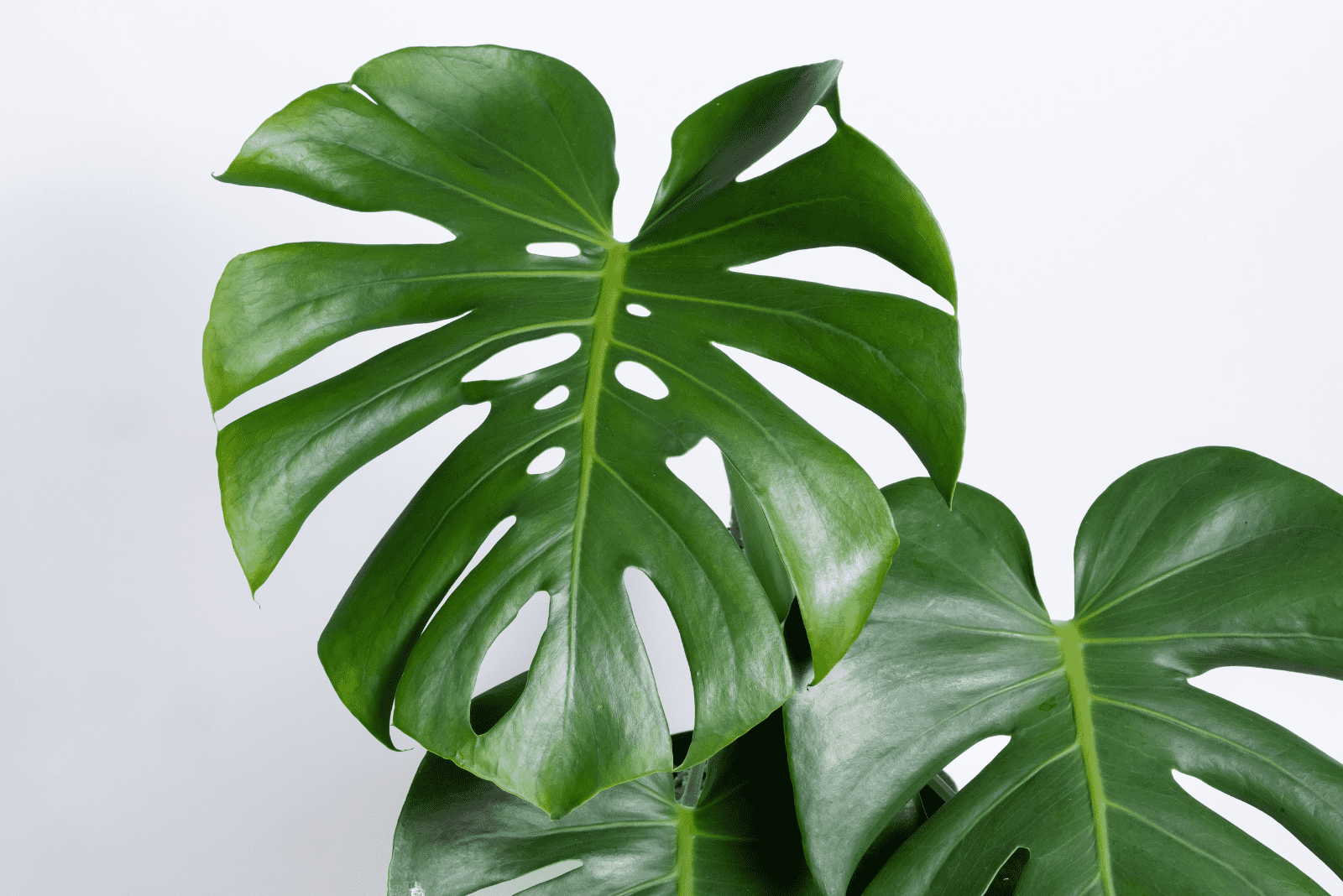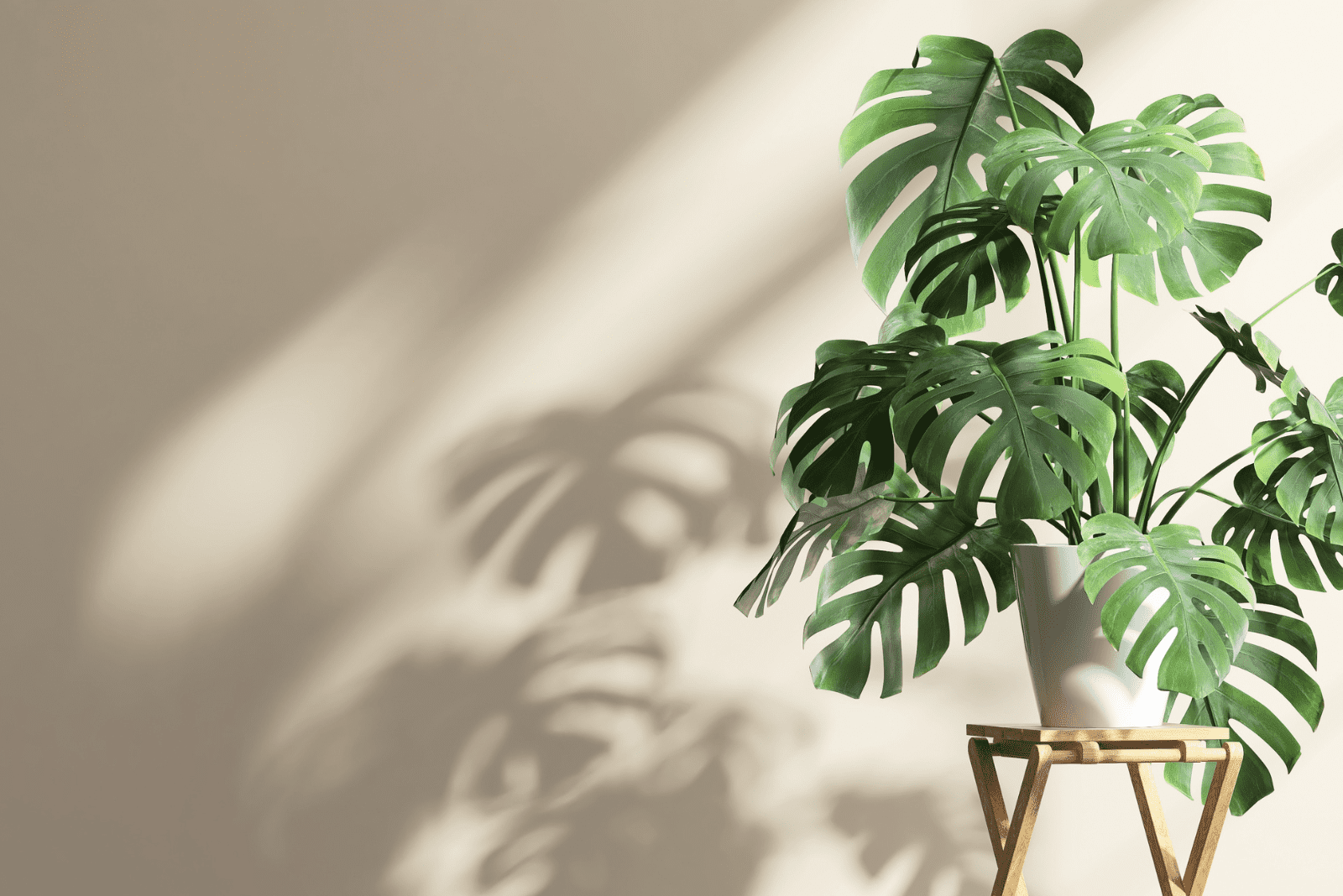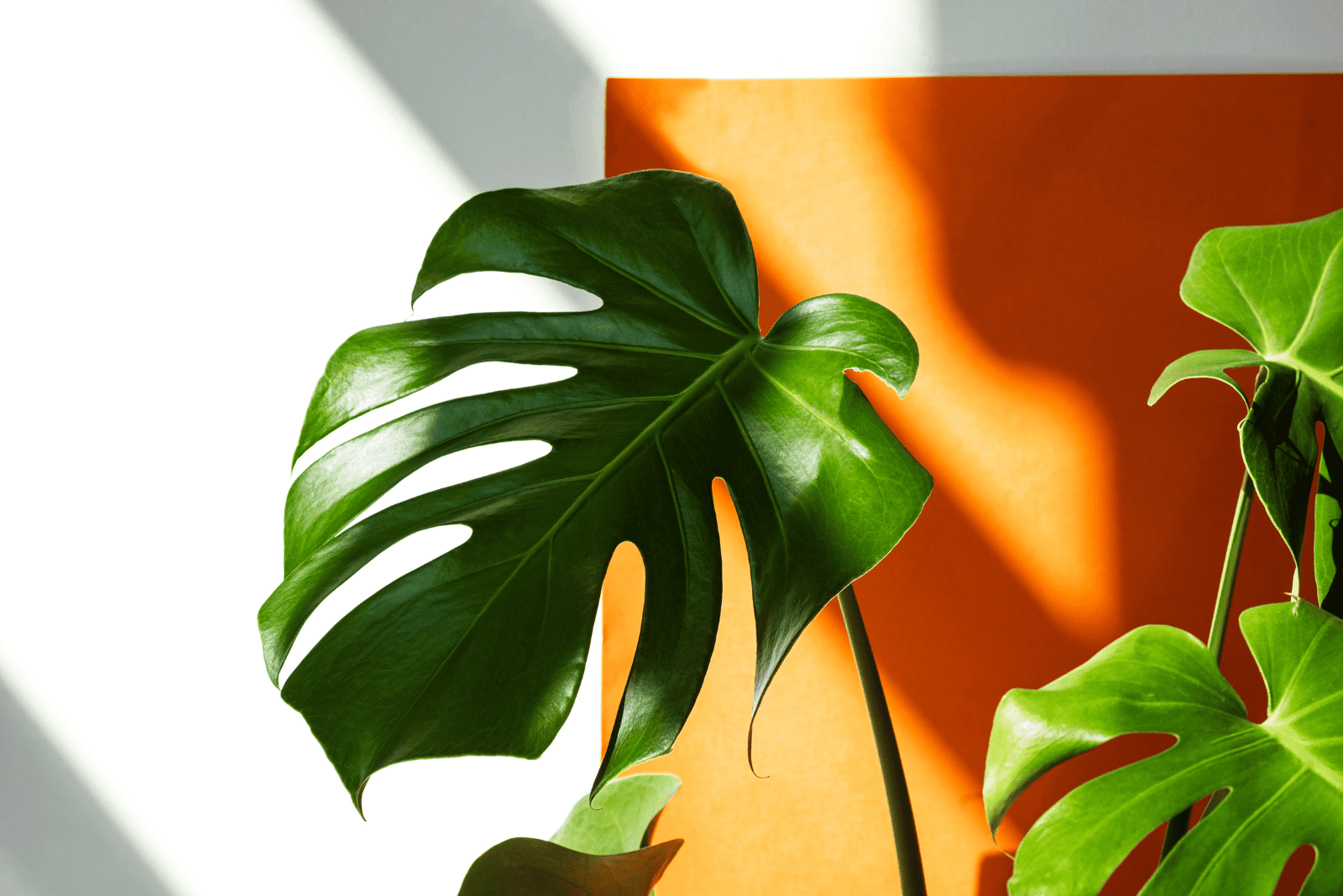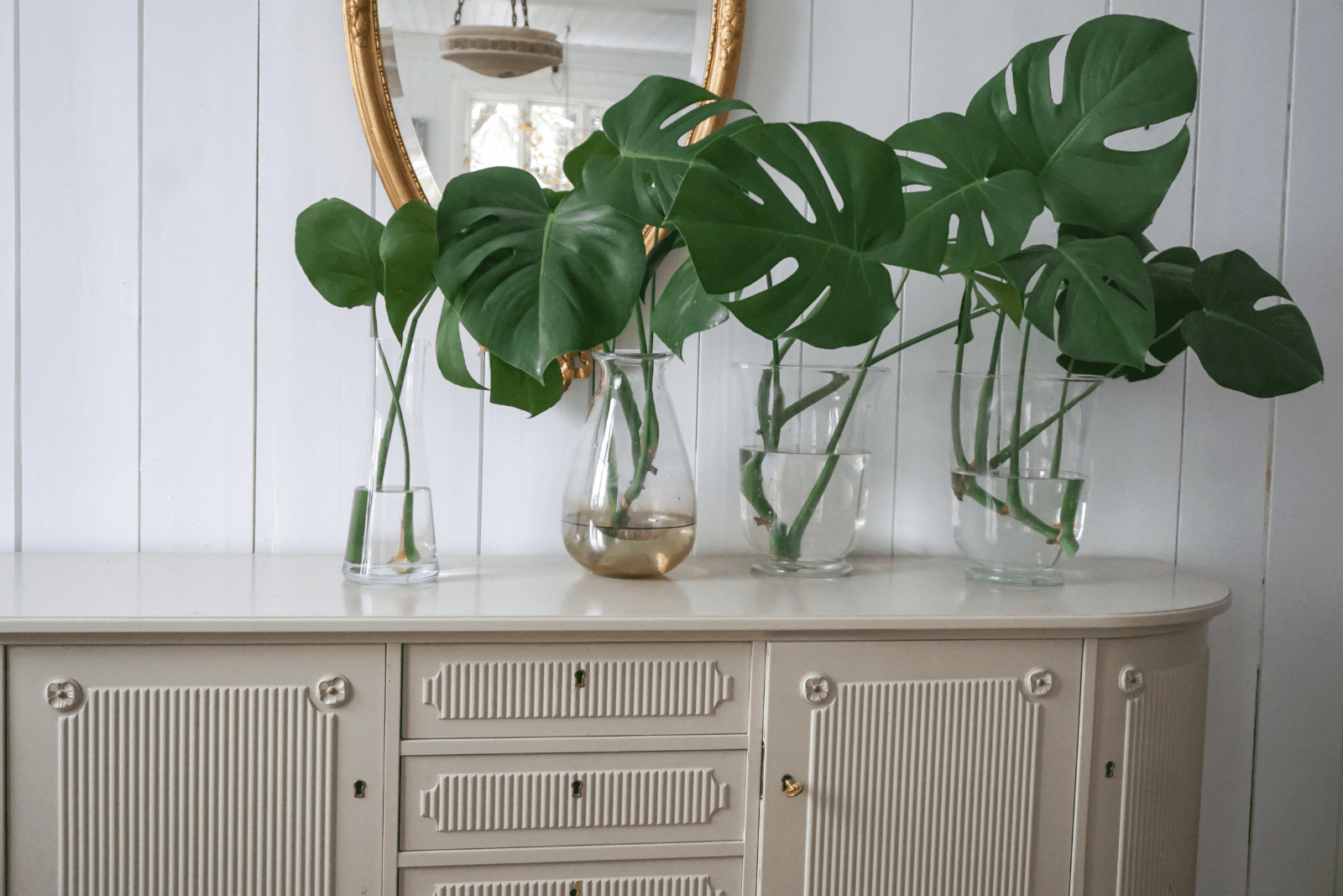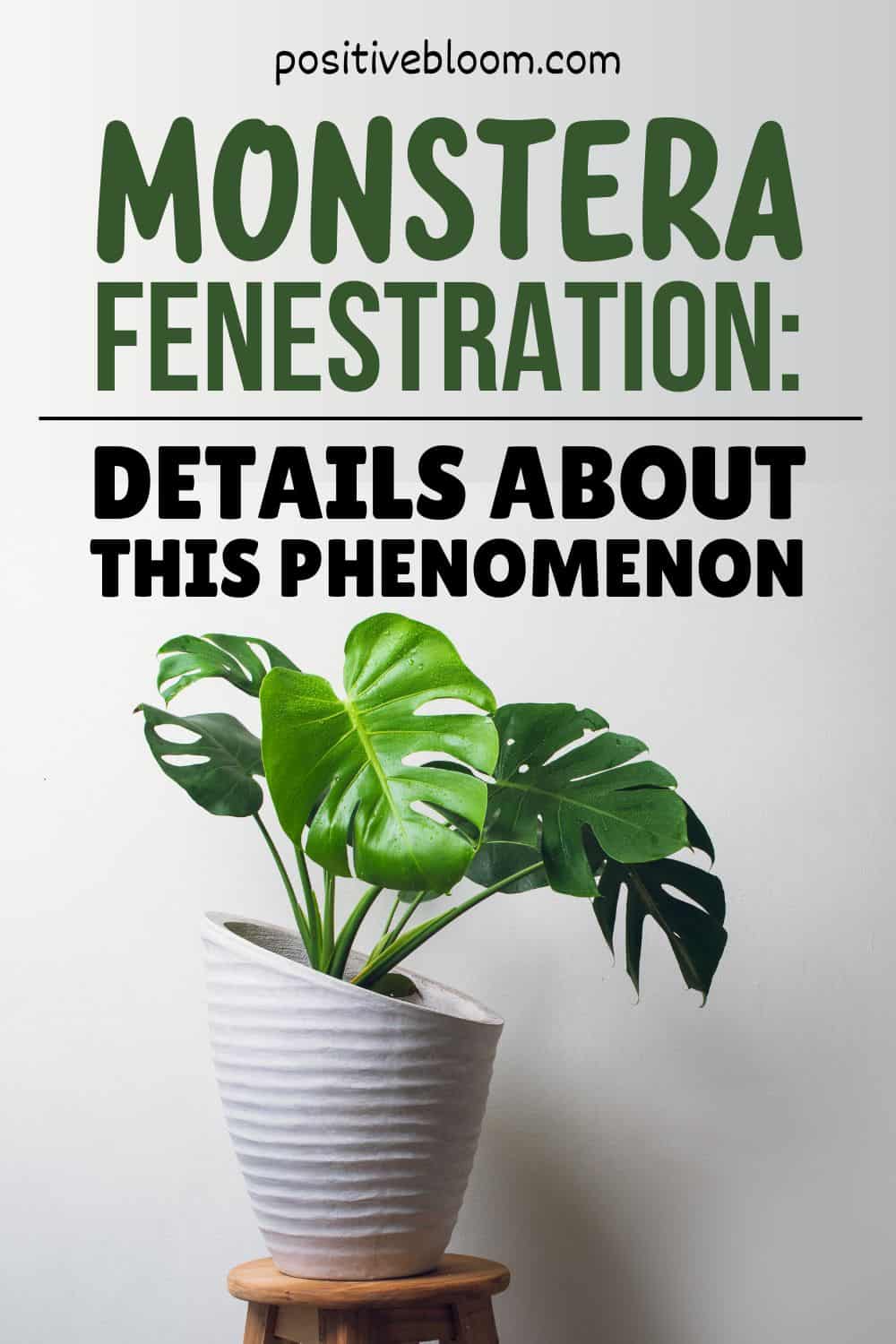The Swiss cheese plant is primarily attractive because of its split leaves, but why does this plant have it while others that come from the same regions do not?
Is this plant tougher or more delicate than other plants?
We’ll answer many questions about monstera fenestration, including why and when it happens, what their benefits are, how to get more split leaves, and why some monstera leaves do not split.
Before we start answering these questions, let’s learn some specifics about monstera plants:
[table id=320 /]Monstera Fenestration: Why Do Monstera Leaves Split?
The key questions we’ll tackle in this section are “What causes fenestration in monstera plants, and why do the plant’s leaves split in the first place?”.
The leading cause of the monstera plant’s split leaves is genetics. It is the plant’s mechanism of providing enough light, water, and protection to the weakest and lowest parts.
Before the plant can activate these mechanisms, its leaves must first open. There are quite a few reasons monstera leaves might not be unfurling and several ways of fixing them, but the main ones are lack of humidity, soil moisture, and sunlight.
Once the new leaves open, they will start changing and adapting to their environment, gaining more or fewer fenestrations based on their needs.
Let’s examine these monstera needs that make it split its foliage.
To Increase Access To Sunlight
One of the likeliest theories for why monsteras develop fenestrated leaves is C. Muir’s hypothesis that such leaves catch more sunlight in the dense rainforest environment.
It might seem contradictory at first because splits reduce the leaf surface, making it less likely to capture light. But if you have ever seen a monstera, you’ll know that fenestrations appear on older leaves, which are much larger than the younger ones.
Of course, their size could be attributed to the fact that those leaves are older, but Dr. Muir has another suggestion; he says that fenestrated leaves can be much larger than unfenestrated ones, and their entire green surface can catch the sunlight.
Christopher Muir claims that both fenestrated and nonfenestrated leaves can capture the same amount of light, the only difference is that split leaves are more likely to have more light exposure.
Also, fenestrated leaves allow sunlight to reach the plant’s lower leaves, which wouldn’t be exposed to any light were the foliage whole.
To Get More Access To Water
1. W. King is the father of one of the earliest theories of why monsteras have split leaves. He claims that the reason for fenestrations is to increase the plant’s access to water.
Unsplit leaves would act as a barrier, and the rain would not effectively reach the plant’s roots.
However, this theory was quickly discredited as there are many other plants without split foliage that still thrive in rainforests all over the world.
To Withstand Strong Winds
Protecting the monstera plant from hurricanes and strong winds is another theory that tried to account for the plant’s splits.
It was assumed that the fenestrations reduce the surface upon which the winds can act, thereby protecting the plant.
However, there are many other tropical plants, such as philodendrons, pothos, alocasia, and colocasias, that do not have splits and still thrive in rainforest environments.
Whatever the reason for leaf fenestrations may be, we can still enjoy the split foliage on mature monsteras!
When Do Monstera Leaves Split?
You can choose from many Monsteras, such as Monstera dissecta or Monstera adansonii varieties to enjoy their holey leaves, but one of the things all growers would like to know is when the splits appear.
Do monstera leaves open with fenestrations, or do they appear later on?
Unfortunately, the plant’s heart-shaped leaves cannot split after opening, so if your plant doesn’t have holes after unfurling, you’ll have to wait for the new foliage and hope for the best.
Even though young monsteras don’t usually have fenestrated foliage, they will appear once your plant is 2-3 years old.
This tropical plant first develops 5-6 smaller leaves on a single stem, and as it grows older, larger leaves start to appear, and you can expect fenestrated foliage to emerge once your plant reaches a height of three feet.
Once the plant passes its third birthday, the large, fenestrated, and mature leaves will grow regularly. As soon as you get used to seeing many splits, the plant will surprise you and develop another row of holes close to the midrib.
Therefore, if you don’t want to wait a couple of years before your plant starts splitting its foliage, there are a few things you can look out for. If the plant in the nursery has small and bright green leaves with just a couple of nodes and aerial roots, it will take a while before it produces fenestrations.
Mature plants are more expensive, but none of my impatient friends have regretted their decision.
The 3 Monstera Fenestration Stages
Monsteras don’t develop their split leaves as soon as they start growing. There is a long way ahead for your new plant before it can produce its signature foliage!
However, it will be much easier waiting for the fenestrations if you know exactly when they will appear. There are three fenestration phases, and understanding them better will make you more confident about your plant care abilities.
1. Solid Leaf
The monstera’s first foliage will be solid and won’t differ much from the rest of the leaves of these tropical plants.
But as your houseplant grows older, its appearance begins to change.
2. Side Slits
The first thing you’ll notice are the side splits on the edges of the plant’s foliage.
The slits are not that long, just 1-2 inches, so they don’t go all the way to the middle like with older plants.
3. Midrib Holes Stage
As the side slits become more and more frequent, you’ll soon notice rows of holes that appear parallel to the midrib. There are primary, secondary, and tertiary holes that go all the way through the leaf.
They are also more prominent than the side slits and give your variegated monstera a wonderful look.
How To Get More Fenestration On A Monstera
One thing you can do to get more slits and holes on your plants is prune the older, smaller leaves that haven’t fenestrated. The plant will then direct all its energy into producing new leaves with a higher chance of bearing holey foliage.
Remember, unfenestrated leaves cannot magically gain holes; they have to be unfurled with them.
The best way to ensure plenty of fenestrations for your monstera leaves is by taking excellent care of your plant, so we included a short care guide for this plant to help you out.
Monstera Care Tips
Monstera plants require filtered, natural light, watering whenever the topsoil is dry, regular fertilization, and well-draining soil.
There are a few other things you need to look out for, such as repotting, temperature, and humidity, but that’s pretty much it.
The good news is that this genus has the same needs, so the care guide for a monstera deliciosa is virtually the same as for other monsteras.
Even though plant care for all monsteras is similar, we’ll still examine what you need to look out for in order to get a fenestrated plant.
Expose The Plant To Bright Light
Low-light conditions can lead to many unsightly monstera issues, such as droopy and pale leaves or yellowing of the foliage.
There are also other consequences.
Monstera plants that don’t get enough light may fail to split, so you should place your green buddy near an east or south-facing window where it can be reached by the morning or late afternoon sunlight.
Don’t end up at the other extreme, though! Direct sunlight will burn your plant’s foliage, and you’ll be left with crispy and curly leaves wondering what to do next.
Therefore, you must place your indoor plants in indirect light to ensure their proper growth and development.
If your apartment is north-facing or you simply want to provide your plant with the best possible growing conditions, you can always invest in some grow lights and adjust the amount of light your plant gets.
Ensure Proper Irrigation And Humidity
To ensure that the plant’s growth is progressing as it should, keep your monsteras well hydrated.
These plants are native to the tropics, so they need a fair amount of water to thrive. Generally speaking, you can water these plants once a week during their growing season and every other week when they enter dormancy.
However, the best way to avoid under and overwatering is by checking whether the top few inches of the soil are dry.
Too much moisture in the soil can lead to all sorts of issues, the most serious of which is rot.
The symptoms of monstera root rot cannot be detected when the plant first gets this disease, so this infection can cause a lot of damage before you know for sure that it’s what’s making your plant grow slowly, turn yellow, and droop.
Completely dry soil can also stress your plant, which won’t produce new growth until you start watering it properly.
Humidity
Another thing that can increase the fenestration on your plant’s foliage is high air moisture levels. Monsteras are tropical plants that need a relative humidity between 60-80% in order to thrive.
Most households aren’t that humid, so we have to find other ways to increase the air moisture levels.
Thankfully, misting your monsteras every couple of days or using a humidifier will quickly get you the fenestrated foliage you desire.
Don’t Forget About The Temperature
Monsteras are tropical plants, so they cannot handle extreme cold. They prefer mild room temperatures between 65-85°F.
The weather conditions can be a bit colder, but anything below 55°F will stunt the plant’s growth, and temperature below 50°F can stress and kill your monstera.
You should also keep your plant away from AC vents, heaters, and drafty windows because all these locations experience temperature fluctuations that can shock your plant and cause it to droop and slow its growth.
Use An Adequate Soil Type And Fertilizers
A fertile and well-draining growing medium is a must-have when nurturing monsteras. Thankfully, there are pre-made aroid soil mixes that you can get on Amazon or from your local store that are perfect for these plants.
However, if you don’t mind getting your hands dirty and have the necessary ingredients, you can always make the blend yourself.
Enrich the potting soil with perlite, peat moss, orchid bark, and coco coir to create a balance between moisture-retentive and draining materials.
If you use too many materials that let water seep through, you’ll have to irrigate your plants more frequently, and if you use too many ingredients that retain moisture, you’ll risk overwatering.
I also love to add some organic matter, such as earthworm castings, as they ensure proper nutrition.
Fertilizer
Feed the Swiss cheese plant once a month during its growing season with an all-purpose fertilizer diluted to at least half-strength.
However, if you have recently repotted your monstera, you shouldn’t feed it immediately. Fresh soil contains enough nutrients for the plant to thrive for the next half a year, so only start feeding your plants approximately six months after repotting.
If the new growing medium already contains fertilizer, you can wait about 9-12 months before feeding your plant.
Always water the plants before applying fertilizer and carefully read the instructions on the package to get the dosage right.
Repot Your Plant
As a plant parent myself, I know how difficult it can be to see your plants unhappy. Root-bound monsteras will slow their growth and have difficulties absorbing nutrients and moisture from the soil.
Thankfully, this issue can be easily fixed; all you’ve got to do is to replant your monstera every 1-2 years (or more often if it doubles in size).
The key is finding the best container for monsteras, which would have drainage holes and not be so big that it lets water pool around the plant’s roots.
(Remember the golden rule: only 1-2 sizes larger than the previous one if the plant is root-bound.)
Fill the new container with a well-draining growing medium, place the plant in it, and backfill the pot with more soil.
Irrigate your plant thoroughly after repotting, and place it in a well-lit spot where it can bask in indirect sunlight.
Pro tips: Repot your plants in spring, as that’s when they are actively growing and can adjust to their new home before winter arrives. Make sure they are well-hydrated before replanting to help alleviate transplant shock.
Propagation
Propagation is not an essential plant care tip that will increase the fenestration on your monstera. In fact, propagated plants will only produce solid leaves until they are at least two years old.
However, this doesn’t mean that you should shun this practice altogether.
For instance, diseased plants with no chance of survival might still contain a few healthy stems that can be propagated.
There are a couple of ways to multiply these plants, such as propagating your monstera in water or soil, but this section will offer some tips for soil propagation as it’s more suitable for beginners:
Step 1. Choose a healthy stem with at least one leaf node and some foliage, and cut it at a 45° angle. An incision like this will ensure the best water and nutrient uptake. You must also ensure that the cutting is no longer than 6 inches or it might fall under the weight of the leaves.
Step 2. Dip the cutting in a rooting hormone to speed up the entire process.
Step 3. Fill a nursery pot with well-draining soil or seed starting mix, and plant the monstera cutting in it. Ensure that at least one leaf node is buried in the growing medium, as that’s where the roots will develop.
Step 4. Water the cutting thoroughly, move it to a sunny location and cover it with a humidity dome or mist it occasionally. Irrigate the plant regularly, but don’t overdo it as it might lead to rot.
Step 5. Once you notice new growth, you can try slightly tugging on your plant, and if it offers some resistance, you’ll know that the propagation was a success.
Step 6. Repot the propagated monstera in a larger container once it doubles in size.
Monsteras Losing Fenestration
In the sections above, we discussed the main reasons monsteras have splits and holes and how to get more fenestrations on your plants.
But, your plant may suddenly start producing solid leaves without any holes at all! Why does that happen?
Well, there are two main reasons your plant might not produce fenestrated leaves: inadequate care and the age of the plant.
We’ll discuss both these issues separately in the sections below.
Inadequate Care
Inadequate care will affect the plant’s appearance as it hinders its ability to produce the food and energy it needs for proper development.
Plants photosynthesize glucose for growth and the production of new leaves, and if there isn’t enough of this sugar, the plant will redirect its energy where it’s most needed; the roots, which will produce new stems and leaves.
What can mess with your plant’s ability to photosynthesize?
A lot of things. One of the main reasons plants stop producing their own food is a lack of sunlight and water, which play an important part in this process.
However, too much moisture around your plant’s roots from frequent irrigation, an inadequate pot, or heavy soil can also prevent your plant from photosynthesizing.
For instance, only green leaves can participate in this process, and overwatering often makes leaves yellow, which means they lose the chlorophyll required for photosynthesis to occur.
Nutrient deficiency or overfertilization can also lead to leaf discoloration, and your plant will produce less food. It won’t be able to bear new leaves, fenestrated or not, in this case.
Age Of The Plant
Young monsteras don’t produce fenestrated leaves until they are 2-3 years old – or around 3 feet tall.
This is probably due to the fact that leaves on young plants are much smaller than those on older plants. For instance, there’s a theory that says monstera leaves fenestrate to let the sun through to the lower leaves.
As young leaves are not so large and wide, there’s no reason for them to split just yet.
Conclusion
This article examined all the important things you need to know about monstera fenestration, including why it appears in the first place, when the plant’s leaves will split, how to get more of it, and why some plants seem to lose their fenestrations.
Of course, holes and splits aren’t there only for aesthetics, even though that’s why we get this plant.
There are a couple of theories that explain why fenestrations exist, but the most widely accepted one says that it’s to ensure that light can get to the lower parts of the plant.
However, there are other, older theories that suggest monsteras have split leaves to allow water to seep through the holes and reach the roots more efficiently or to protect the plant from the harsh winds.
But we still enjoy their looks, regardless of the reason, which is why we need to make sure that the plant stays healthy in order to produce more fenestrations.
And that’s the main reason monsteras lose them – inadequate care.
Now that you know it is all up to you and not some arbitrary rule, you can take proper care of your plant and enjoy its many attractive leaves.
Enjoy the holey look of your monstera, and until next time!
Like this post? Share or pin it for later!

